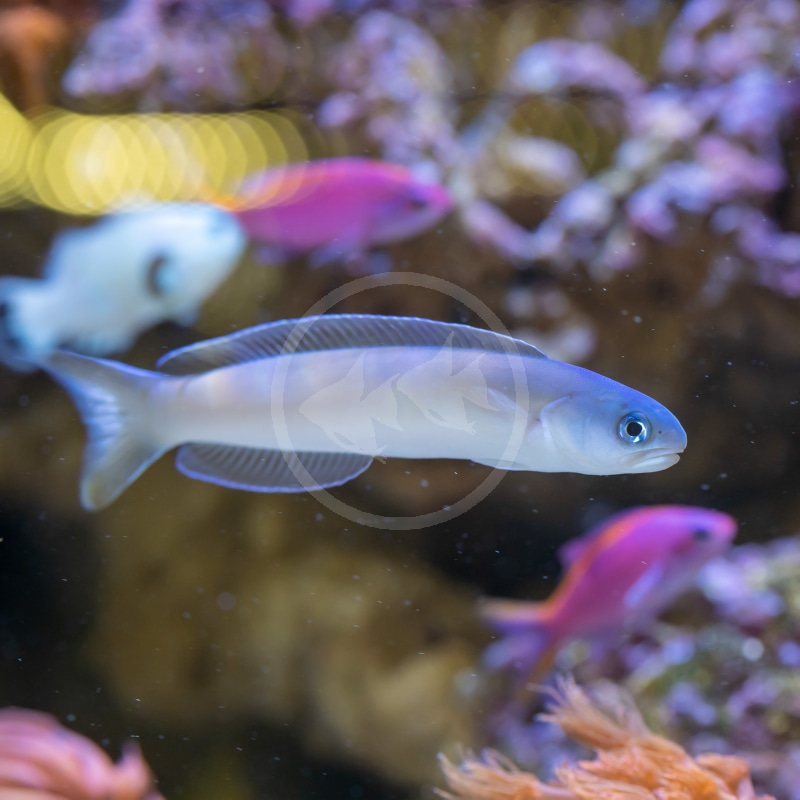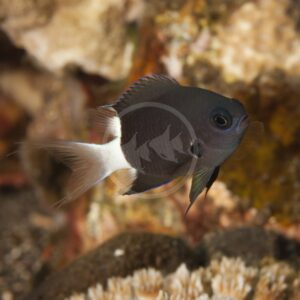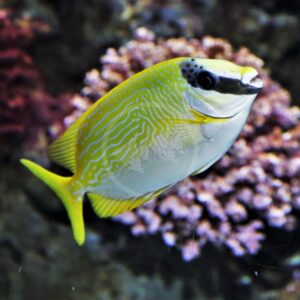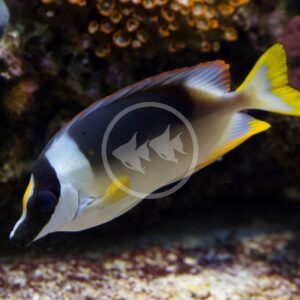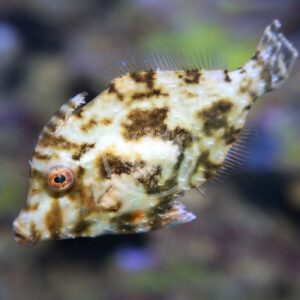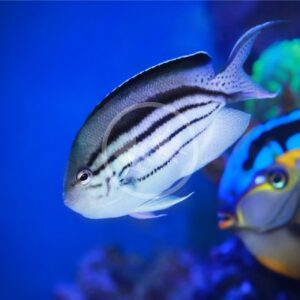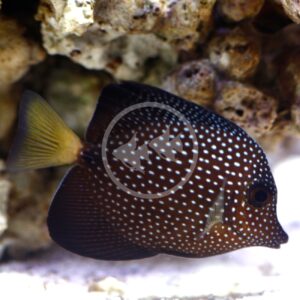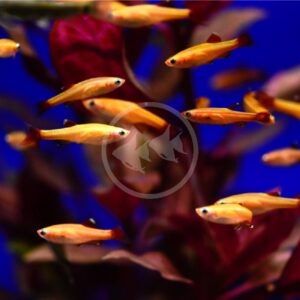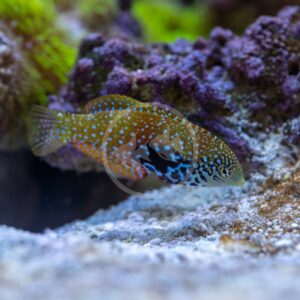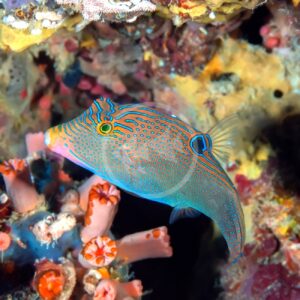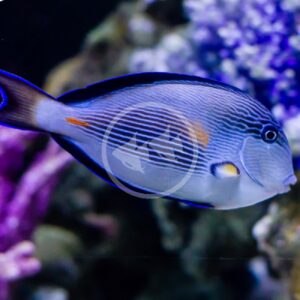Care Level: Advanced
Temperament: Peaceful
Reef Compatible: With Caution
General Description: The Flashing Tilefish is native throughout deep rubble zones of the Indo-Pacific. Best left to the expert aquarist that can provide this species with the attention, dedication and patience it requires at first. Because they come from deeper waters, one of the main challenges of housing tilefish is getting them to adapt to artificial bright lighting of aquariums. If possible, dimming the lights on your aquarium at first could really benefit this species as it settles in. Tilefish are also almost always in pairs in the wild and replicating this in the home aquarium will increase your success, too. For this reason, we try to offer our Flashing tilefish in pairs whenever possible. Hoplolatius require a moderately-sized to fine sandy substrate that is several inches deep in order to be able to create a burrow for themselves at night for protection or if felt threatened during daylight. Both male and female Flashing tilefish have elongated, torpedo-like bodies that are blueish-green typically. They get the name “Flashing” from their incredible ability to rapidly change coloration, from deep blue to yellow to green, depending on the environment or their mood. An adult Flashing tilefish can reach a size of approximately 5″. Note: Tilefish are infrequently available given collection constraints and more specialized care.
Diet Requirements: Tilefish are carnivores. Live foods, such a brine shrimp and blackworms may be required as a precursor to accepting frozen foods. Otherwise, a diet consisting of various meaty preparations such as brine shrimp, mysis shrimp, mussels, clams and other mixed frozen foods that contain algae, such as spirulina, will maintain optimal health and coloration. We highly encourage soaking frozen foods in vitamin and fatty acid supplements to improve body mass. Multiple, small feedings per day rather than one large feeding can also help and in turn create more of a natural environment for a Flashing tilefish as it would feed in the wild. Note: Our Flashing tilefish for sale are eating a combination of live foods and frozen foods, or frozen foods only. It is not uncommon for this species to revert back to only accepting live foods, or ignore food altogether, for a period of time due to the stress of a new environment.
Care Requirements: An established, minimum 90 gallon aquarium is needed for a single, or pair, of Flashing tilefish. A tight fitting lid, in addition to covering any openings or holes, is an absolute must for this species. Tilefish are notorious for jumping out of aquariums, and it is the number one cause for losing tilefish. Tilefish are known to be quite skittish at first, and may even be spooked by human activity outside of the aquarium. It is not uncommon for your newly introduced Flashing tilefish to hide, or to ignore food for up to a week. A variety of rock work and crevices to swim through and hover underneath will aid in this fish adjusting to aquarium life and encourage more outgoing behavior. A several inch deep sandbed is required for their natural burrow-digging behavior; also ensure your live rock stack is secure and stable for this reason. Given their peaceful nature, a Flashing tilefish should not be kept with overly aggressive species, especially those that can outcompete it in food resources. It is best to add tilefish before larger or more active fish in order to allow it to acclimate to the environment and avoid intimidation. Tilefish are to be added “with caution” into a reef aquarium because very small, decorative invertebrates [e.g., shrimp] could be at risk with adult specimens. Additionally, because Flashing tilefish do dig burrows, this may be viewed as undesirable in a reef setting. Flashing tilefish will not harm corals. Recommended water conditions, 72-78° F, KH 8-12, pH 8.1-8.4, salinity 1.020-1.025.
Purchase Size: Small: 2″ to 3″; Medium: 3″ to 4″; Large: 4″ to 5″
Note: Your item may not look identical to the image provided due to variation within species. Purchase sizes are approximate..


